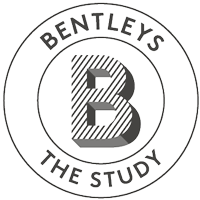

At first glance, Alan Pollock is not your typical revolutionary. The Flight Commander and father of four scored exceptionally well in his training programme at RAF Cranwell and was a highly capable pilot of the Hawker Hunter jet, a plane that broke the world air speed record in 1953 with a speed of 727.63mph.
Hunter F.1s entered service with the Royal Air Force in July 1954, seeing action in the Suez Crisis and Brunei Revolt. During the Aden Emergency of 1963-67, Hunter FGA.9s based at RAF Khormaksar, Aden, were regularly called in by the British Army to carry out strikes on rebel positions. Pollock himself bombed the SS Torrey Canyon oil spill with napalm at Lands End in March 1967, combatting the fallout of Britain’s worst ever environmental disaster.
As the Red Arrows' predecessor, Hunters were used to perform outrageous stunts by the Black Arrow and the Blue Diamond Aerobatic Squadrons in the late 1950s.
The Black Arrows would start each day of the 1958 Farnborough air shows with an enormous formation of 22 Hawker Hunter F6's completing two consecutive loops; a world record which has never been equalled and likely never will, given the sheer danger of such a manoeuvre. After these loops, the six outer aircraft would break off from the formation and the Black Arrows would return for a 16 aircraft roll, another unprecedented feat which, though subsequently equalled by other aerobatic teams, remains unsurpassed.



In 1968, the RAF celebrated their 50th Anniversary. Pollock was furious at the lack of plans for a London flyover and as a member of No.1 Squadron, the oldest in the RAF, he believed it was part of his duty to ensure the anniversary was commemorated properly. “Monday, April 1 was the official anniversary so I was surprised to find we were on normal duties,” he recalled in a 2010 interview. “In fact, most of the pilots didn't even realise it was the anniversary.”
As part of the celebrations, Pollock and three other Hunters flew from West Raynham to Tangmere airfield on April 4. Suffering from a bad cold which later developed into pneumonia, the pilot downed some strong painkillers. Their effect, coupled with sleep deprivation and a few glasses of champagne, may have contributed to the surreal events that were about to unfold.
The Hunters departed Tangmere the next day, heading back to West Raynham in Norfolk. Pollock described the weather as ‘gin clear’ with excellent visibility – a crucial detail for his forthcoming detour. Upon takeoff, Pollock immediately peeled away from the other Hunter pilots, buzzing Dunsfold Aerodrome before setting a course for Central London. He advanced eastward up the River Thames, keeping low to avoid commercial air traffic, and lapped the politicians sitting in the Houses of Parliament three times to protest against Harold Wilson’s defence budget cuts.
His next stop was the RAF memorial on Embankment. Dipping his wings as mark of respect, the tantalising prospect of Tower Bridge then appeared in his cockpit window. “There, staring me in the face, was Tower Bridge. I’d forgotten it was there! I could have gone over it, but I was intrigued by it as a target.”
Pollock's spontaneous decision to fly through Tower Bridge was a masterstroke of daring and precision – the first time anyone had done so in a jet aircraft. The manoeuvre left a passing cyclist on the floor and an indelible mark on London's memory. Alan later recalled: “Right at the last minute, as my cockpit canopy was just below the bridge and the girders were all around me, in that microsecond I remembered I’d got a tail fin behind and I thought, ‘I’m going to lose the fin!’”.
Perhaps realising that his days in the RAF were numbered, Pollock took a scenic route back to RAF West Raynham, buzzing the airfields at Wattisham, Lakenheath and Marham. He was formally arrested by the RAF an hour after landing before being placed in a "psychiatric hold" for two days. Demonstrations of support for his conduct was expressed by British Overseas Airways Corporation (BOAC), which sent him a keg of beer, and six members of the House of Commons spoke on Pollock's behalf in Parliament.
Over the years, Pollock’s flight through Tower Bridge has come to symbolise a unique blend of courage and protest befitting of the 1960s. It remains a notorious chapter in the RAF’s storied history, demonstrating the indomitable spirit of its pilots and the lengths they will go to honour those who serve.
Bentleys currently have a model of the RAF Hawker Hunter available. Click here to view.




